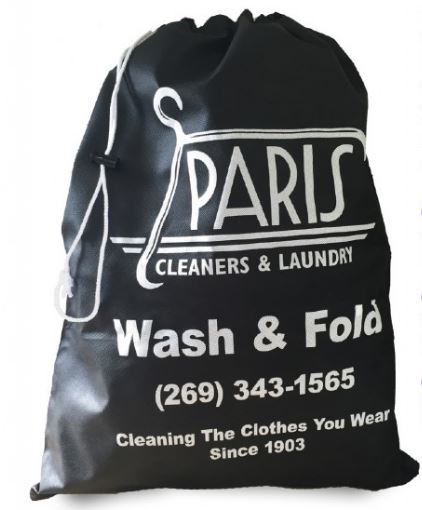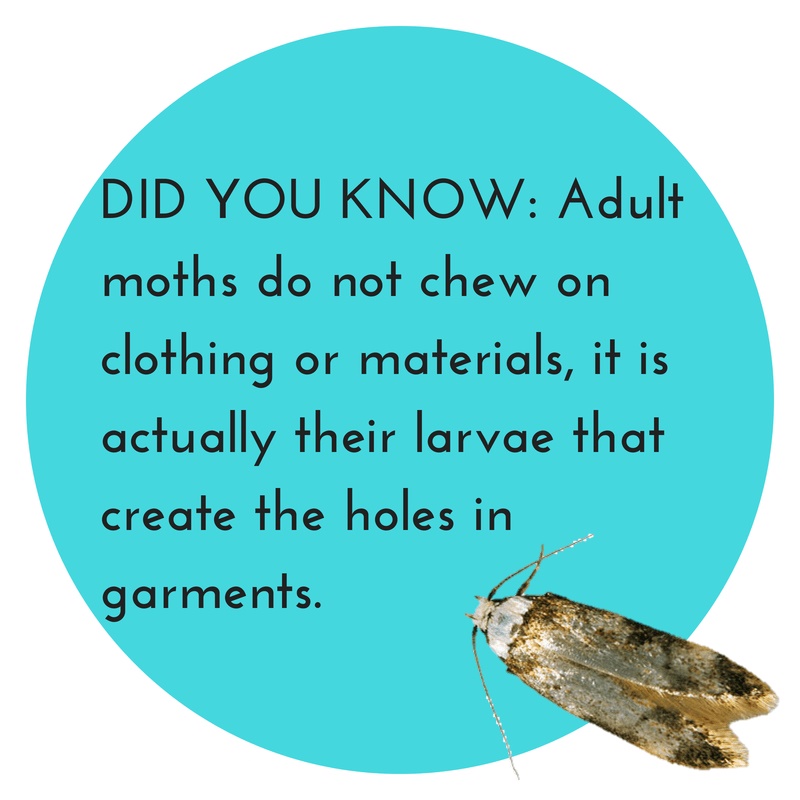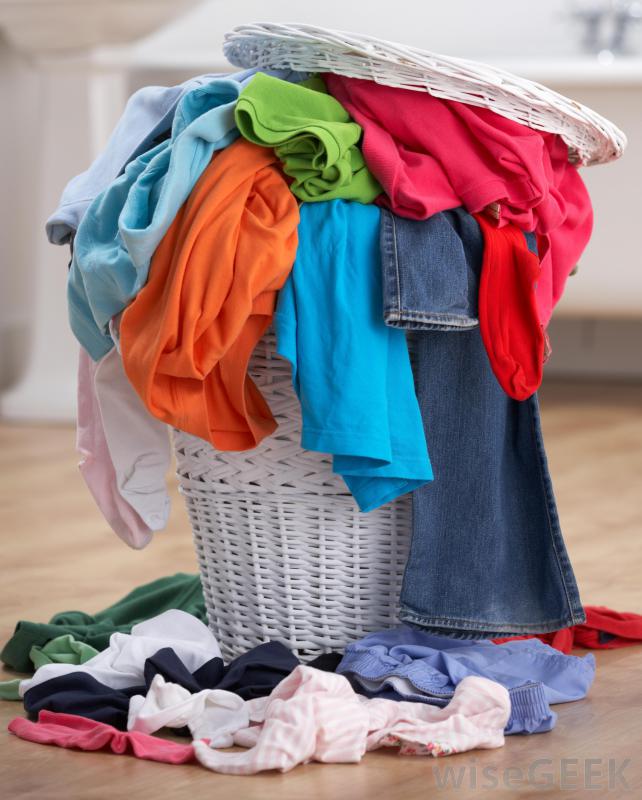|
- What is their lost garment/damage to clothing policy?Do they replace or give you depreciated value as listed in the International Fabricare Institute’s Fair Claims Guide? What this means is that a three year old custom suit bought for 2K can be argued by a cleaner to only be worth 200 dollars. So, was saving that $5 worth it? Always choose a cleaner with a great replacement policy.
-Our policy on lost or damaged items is to take every situation on its own and work through it work the customer to come to a fair settlement on both sides. We will do what is right to maintain the strong relationships we build with our customers.
- Are they clear on their pricing?Do they try the old “bait and switch” trick, and if so, what does this say about the integrity of the cleaner? Make sure to ask how much you’ll be charged upon picking up your item – the lowest price guarantee that brought you into the store may only apply to one item, and even the listed prices may just be starting prices not including extra costs applied to specialty garments.
-We charge based on each item. Most of our pricing does not incur any upcharges or additional fees. The price we tell you is the price you will pay. On occasion, there will be an additional charge for excess hair removal or heavy stains that take more time to work on but we will be up front about these charges.
- How long have they been in business under their current name?Be wary of a cleaner that has changed ownership and names every few years. In the case you do have an issue with a cleaner, take them to court, and win, collecting on a judgment is notoriously difficult because unless they voluntarily pay up, you need to force a withdrawal.
-Paris Cleaners has been in business since 1903 in the Kalamazoo and Portage areas. We are invested in the community and looking to continue to grow.
- What level of training do they have?When you hand the person behind the counter a silk shirt and ask for it to be laundered, you want someone behind the counter to suggest that the shirt be carefully dry cleaned instead, since a harsh washing method like laundering would destroy the shirt. Don’t be afraid to ask about trainings and “test” their knowledge of the cleaning process.
-All our employees go through rigorous training to learn all about the process of cleaning and the care each type of fabric needs. We have employees who have been working in the industry for over 20 years and are the best around.
- Are they environmentally friendly? Repeated exposure to large amounts of perc can cause cancer in humans.I am very pleased to see professionals in the industry moving to a chemical free cleaning process that involves CO2. In addition to being friendly to the environment, it is a superior cleaner to petrochemicals.
-We moved away from harmful chemicals years ago as a result of the damage they cause to the environment. We offer 3 different cleaning solvents that are all safe for the environment. We also have recycling programs in place for the hangers we use and the poly bags that are placed over the clothes. We welcome our customers to send them all back to us.
4 Steps to Moth-Proofing your Seasonal Wardrobe
Moths are the kind of pests most of us have just learned to live with. They always seem to be around and don’t really bother you – until you pull out a silk blouse or Great Grandma’s linens that have been passed down from generation to generation. Moths can seem quite innocent in nature, but their destruction of wardrobes, fabrics and textiles can be pretty tragic, especially when it happens to family heirlooms! What if I were to tell you that you can prevent moths and not have to live with them and their destruction ever again?
Keeping moths out of stored clothing is pretty simple:
- Wash before storing. You will need to wash your cloth items before you put them away. Moths are attracted to soiled clothes containing sweat, hair, body oils or dead skin cells. Washing or dry cleaning clothes first will make them less attractive to moths.
- Clean storage area. It is important to clean off the shelf, closet, chest or whatever type of area where you will be storing your items. Pre-cleaning the area will assure that any moth larvae or existing moths will not already be present to cause damage.
- Store in vacuum sealed bags or airtight containers. You want to make sure that moths will not, and cannot, get into your items. Cardboard boxes or flimsy plastic bags such as garbage bags or used shopping bags will not provide enough protection from pests.
- Place a natural moth repellent in stored items. By doing this, you are placing the final touch assuring that you will not get moths or moth larvae in your items. Stay Away® Moths creates an invisible barrier that keeps moths out and protects your clothing, linens, family heirlooms and other fabrics. No matter what you are storing or where you store it, you will be satisfied knowing that your things will not be destroyed by moths.
Don’t let these pesky critters cause damage to your clothing and fabric items. Seasonal changes are a great time to get your items professionally cleaned before you put them away. Visit any of our 6 locations to make sure the items are cleaned properly.
Wedding gown Preservation
Today’s brides have plenty of options for what to do with their wedding gown post-“I do.” Some donate or sell their gown, others re-purpose their wedding dress into lingerie or cocktail attire, and others “trash it” with a wet n’ wild photo shoot. Many brides, however, want to hang on to that dress that represents so much love, happiness and celebration.
That’s why wedding dress preservation is so important. A wedding dress is usually intricately designed and extremely delicate, and can’t be cleaned like any old dress. Wedding dress cleaning and preservation is key to making sure your dress lasts a lifetime. Here are some things you need to know about wedding dress preservation.
1. Wedding Dress Preservation and Standard Dry Cleaning are NOT the Same Thing
Unlike one-size-fits-all dry-cleaning, wedding gown preservation begins with an experienced specialist’s assessment. The specialist creates a unique treatment plan according to your dress’s fabric, stitching and details, and analyzes stains along them hem (which are essentially unavoidable on a ground-grazing ensemble like a wedding gown) and entire dress. Whatever the specialist comes up with will give the dress new life without harming the delicate fabric.
2. Invisible Stains Might Be Lurking on Your Wedding Gown
“Oddly, the most dangerous spills are the ones you cannot see,” says Sally Conant, of the Association of Wedding Gown Specialists. “White wine and other things dry clear, and these latent stains contain sugar that caramelizes over time into dark brown stains that ordinary dry cleaning cannot remove. You may think your gown is fine, but in six months or more, the latent stain becomes pale yellow and then darkens as it ages. Heat accelerates the process.”
Professional cleaners and preservationists are trained to spot the unseen, of course. They’ll be able to deal with any stains on your wedding gown, from the invisible to the visible. Did the hem get dirty from your picture-perfect shots in a garden? Did someone slosh red wine on it? Did an overzealous aunt smudge her foundation on it when she came in for a hug? They’ll create a treatment plan for each stain.
3. Pay Attention to the Label on Your Dress
This is one label you don’t want to ignore. Look for any specific dry cleaning directions it might have, such as “Dry Clean Only with Petroleum Solvent.” Whatever it says, listen to it, and make sure the preservationist or dry cleaner you choose has the appropriate cleaning solutions for your wedding dress.
4. Time is of the Essence
Professional cleaning is the first step in wedding dress preservation, and the sooner you can get the wedding dress to the preservationist or the dry cleaners, the better. Brides often wait up to six weeks to take their dresses to be cleaned, and that’s no good! By that time, stains will have had time to really set it. Take your dress off as soon as the reception is over and make sure it gets to the dry cleaner the very next day. If you’re jetting off on a honeymoon, arrange for a bridesmaid or your mother to take it for you!
5. The Wedding Dress Preservation Box is Sealed Airtight
A preserved dress is typically stored in an airtight box where the oxygen has been sucked out and replaced with nitrogen. This prevents oxidation (aging, discoloration, etc.), which can happen to clothes that have been stored for several years. Wedding gown specialists recommend that you never break the seal, and if you do, that you should have it preserved and sealed back up again. If you do, however, take it out for some reason, make sure to handle the gown with white cotton gloves and care.
6. Budget for Wedding Dress Preservation
Include wedding dress preservation in your wedding budget. Considering the average wedding preservation kit costs $250 to $750, it’s a significant expense!
7. Store the Wedding Dress in a Cool, Dark Place
Once the wedding dress has been properly cleaned, it’s time to store it. Protect your dress from direct sunlight, which can quickly fade and turn the dress yellow. Take it off the hanger, which can cause the heaviest dresses to become misshapen. Whatever you do, [avoid storing your dress in a regular, zip up-plastic bag! Plastic like that holds moisture and can potentially discolor a wedding dress. The exception to this is acid-free plastic, which wedding preservation boxes are made from. Go with a professional wedding preservation box, or better yet, a wedding chest.
“An acid-free wedding chest that protects your gown from air and light is the safest way to store your gown for many years to come,” Conant advises. “Breathable bags provide safe short-term storage, but long-term hanging is not good for you gown.”
8. Don’t Forget Your Shoes and Bouquet
Like your dress, the shoes you walked down the aisle in and the bouquet you held also hold a lot of meaning. You can preserve both of these alongside your gown, well. To preserve your wedding shoes by giving them a good cleaning. For cloth shoes, use a gentle cloth and sponge and lightly scrub your shoes with a mild detergent. For leather shoes, give them a polish. If you really did a number on your shoes, you can take them to a dry cleaner. After your shoes are clean, wrap them in white tissue and place them in box.
Depending on the type of material your shoes are, you may be able to include them with your dress in the preservation box. Talk to your preservationist about whether this is possible.
For bridal bouquets, you can press, hang, coat the flowers in wax, or use epoxy resin to preserve the blooms.
9. Proceed Without Wedding Gown Preservation at Your Own Risk
If you choose not to preserve your wedding dress, you risk the following:
- yellowing of the fabric
- brown oxidation spots
- mold and mildew growth
- permanent fabric creasing
Summer Vacation Tips
Have a summer vacation trip planned soon? Summer is an exciting time to get away and relax. Unfortunately, traveling can be very hard on your clothes. It is important to keep these tips in mind to make sure you always look your best during this vacation season!
- Before leaving town, be sure to visit Paris Cleaners to make sure that your clothes are in great shape for your trip. It’s one of the worst feelings in the world to unpack your favorite shirt, blouse or dress, and put it on only to realize that there is a stain on it.
- The best items to pack are light fabrics. Not only will these keep you cool on your sunny, summer vacation, but they will make it easier to carry your luggage while traveling! The lightest fabrics also tend to be the most delicate, so dry cleaning may be necessary once you return from your trip.
- Take care when you are packing your clothes in a suitcase. After picking them up from the dry cleaner your clothes will be in the best condition possible, and you don’t want to ruin that by packing them awkwardly. This will create wrinkles, and could even cause delicate threads or fabrics to get caught in a zipper or clasp, possibly damaging them permanently.
- As soon as you reach your destination unpack your clothes. Hang them in the closet to avoid wrinkles and make sure they have a chance to
 breathe so they keep their integrity.
breathe so they keep their integrity. - If you are staying at a hotel or other unfamiliar setting, be sure to unpack your clothes on a table. Packing and unpacking on the surface of the bed could expose your clothing to nasty bedbugs, which are becoming a more prominent problem when traveling. Dry cleaning can remove bedbug infestation, but it is a problem you want to avoid when possible.
- When you return, take your clothes and laundry straight to the dry cleaner! Your exciting adventures have probably led to some wear to your clothing, and dry cleaning will help restore them so they will be ready for your next expedition! You will also have mounds of laundry to complete. Let us help with our wash & fold service! This can relieve some of the anxiety of returning home and catching up.
Visit any of our 6 area locations or try our FREE pick-up and delivery service before or after your trip.
Too much Laundry but not enough time?
 Paris Cleaners Wash & Fold
Paris Cleaners Wash & Fold
According to a recent study, “80% of consumers purposely overload their washer to avoid doing another load of laundry.”
(LG electronics commissioned appliance behavior survey of 1,003 Americans).
Let’s face it, no one wants to spend an entire day doing laundry. In an effort to speed up the process, some people may toss extra garments into their washing machine. Rather than washing two full loads, for instance, they’ll shove them into a single, oversized load. While this may save you some time initially, it will ultimately come back to haunt you. Here’s why you should never overload your washing machine…
Damages Garments
Have you noticed holes, torn fabric or other damage on your garments after taking them out of the washing machine? This could be the result of overloading your unit. When washing machines are run beyond their manufacturer recommended load capacity, zippers, buttons and other embellished accessories can latch on to nearby garments, causing permanent damage to the fabric.
Leaves Garments Dirty
You might be surprised to learn that overloading a washing machine can result in garments not being properly cleaned. When the garments are soaked in the initial cycle, they turn into one large mass that restricts the normal circulation of detergent. The detergent remains trapped on the top (or wherever you poured it) and is unable to circulate throughout the large mass of clothes.
Whether you use liquid or powdered detergent, it needs space to move around; otherwise, it will remain clumped up where it’s unable to access all of the garments.
Drainage Issues
It’s not uncommon for socks, underwear or other small garments to get sucked down inside the washing machine’s drainage line, preventing the water from draining. You can reduce the risk of this occurring by only loading the unit to its recommended capacity.
Damages the Washing Machine
Overloading a washing machine can also damage its components. A couple extra garments may not seem problematic, but those garments carry a significant amount of weight when wet. Among other things, this additional weight can strain the motor to the point where it blows.
If you find yourself in this situation, let our team at Paris Cleaners & Laundry help.
We weigh each load to ensure maximum cleaning and tumbling action within our machines with the correct ratio of soap and water for your clothing. Not only is it washed and dried, it comes back professionally folded and ready to be put in your drawer. Reduce unnecessary wear on your machine and give yourself more time to spend doing the things you enjoy.
Ask any representative for more details about
our Wash & Fold program.
Importance of Regular Dry Cleaning

Although you understand the process of cleaning your clothes in a standard washer and dryer,
dry cleaning is a different matter. Dry cleaning is called such because the cleaning process
uses little or no water as the cleaners used are organic solvents to remove stains and soil
from garments. Clothing items made of natural fibers including silk and wool may fade, shrink,
or lose their shape if laundered in a washing machine, but dry cleaning these items doesn’t
cause swelling the fibers that lead to damage and discoloration.
Dry Cleaning Benefits
The solvents used in dry cleaning dissolve and remove oil and grease stains, which is something
that water alone can’t accomplish. For other types of stains, the dry cleaner performs spot
treatments that may involve the use of steam or other professional skills and expertise only a
dry cleaner possesses. The process of cleaning the garment with solvents doesn’t crease or distort
garments, but it also can’t restore an item that has lost its shape. However, a skilled dry
cleaner can re-shape the garment, restore creases and eliminate wrinkles through steam pressing.
The entire process of dry cleaning includes cleaning with solvents, spot treatment and a final
press of the garment.
Limitations of Dry Cleaning
Dry cleaners can do amazing things to restore clothing to its original shape, remove stains and
provide a thorough cleaning, but there are limits to what they can achieve. Even the most
experienced and skilled dry cleaner may not have the ability to accomplish the following:
- Remove ingrained grime and dirt that accumulated over years
- Completely remove all stains
- Restore torn or worn areas
- Prevent holes created by insects, pests, snagging or acid
- Remove the shiny appearance caused by too much pressure and heat during home ironing
- Correct damage from improper stain removal
Some of the above issues such as ingrained grime can be prevented with regular dry cleaning.
It’s not always possible to remove every stain due to the type and age of stain and the construction
and color of the fabric. Even at-home stain removal can fail in such instances. Dry cleaners with
tailoring or alteration services can repair holes and some wear, but it’s not included in their usual
dry cleaning service. Sometimes holes in garments appear after dry cleaning, but this is due to
weakened fibers that existed before cleaning.
Obtaining the Best Results from Dry Cleaning
To obtain the best results from dry cleaning your clothing, you need to follow a few practices that
help protect your clothing and extend their longevity. These practices include:
- Regular dry cleaning
- Bringing garment in as soon as possible following a stain
- Discuss stains and point out spills to dry cleaner
- Prevent contact between clothing and solutions with alcohol such as cologne or perfume
as this can result in color loss - Protect delicate fabrics like silk from excess sweat as this can weaken fibers
- Wait until your antiperspirant or deodorant is dry to dress
- Avoid exposing your delicate garments to prolonged direct sunlight
- Never iron clothing with stains as this can set the stains in
Make sure all of your clothing continues to look its best with professional dry cleaning services
from Paris Cleaners.
Visit any one of our 6 area locations or better yet, let us come to you
with our free pick-up and delivery service.
Dry Cleaning for winter coats:
Coat season has arrived so it’s time to pull them out and stay warm. If your coat doesn’t look quite right, Paris Cleaners & Laundry dry cleaning services are here to help!
Paris Cleaners & Laundry offers some ways to keep your coats looking right:
- Keep them clean. Moisture can shorten the useful life of your coats. Never put them away wet. Allow them to air dry outside of your closet when they get wet from rain or snow.
- Allow coats room to breathe in the closet. A couple of inches on both sides should do the trick. Air circulation is important for the long-term usefulness of any garments, including coats.
- A coat that repels water helps keep dirt from finding the fabric and making a home. When you get a water repelling coat cleaned, apply a water repellent (or let us do this for you).
- Don’t leave your coat in your car just to be convenient when it turns cold. A coat left in a hot car, especially after getting wet and left crumpled on the back seat, can result in shrinkage, loss of shape and even a musty smell.
- Leather, suede and fur coats are a completely different deal. They require special methods of cleaning, conditioning and care after. Make especially sure you wipe down these coats when they get wet or after a spill. Annual cleaning and conditioning will make sure your leather and suede last for decades.
To take advantage of convenient laundry and dry cleaning pick-up services near you offered by Paris Cleaners & Laundry, call 269-343-1565.





